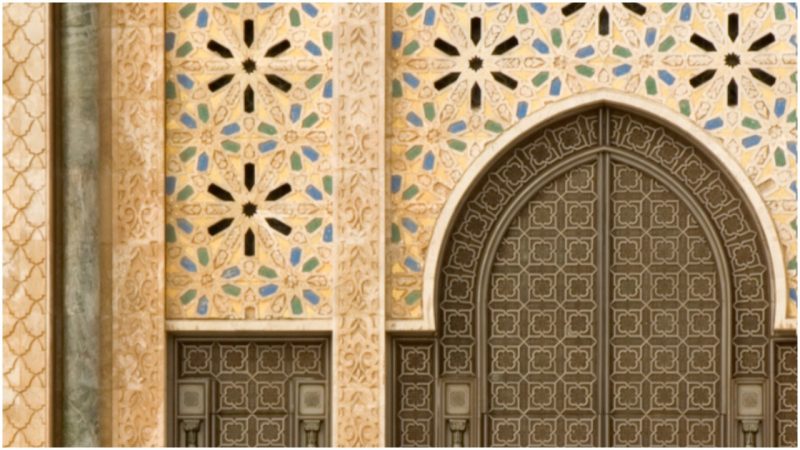Zellige is an ornamental Moroccan handicraft technique of tilework. In Arabic, zellige means “little polished stone” and is similar to azulejo, a practice based in Spain and Portugal. The technique involves assembling differently colored and shaped fragments of glazed terracotta tiles to form geometric patterns that can repeat endlessly.
This particular way of making tilework was created in Morocco, but very soon spread around the world as an art form and was sought after for interior decorating.
The technique of making zellige tiles appeared in Morocco in the 10th century, and it is believed that its basic purpose was to create a local version of Greco-Roman mosaics. However, many sects of Islam forbid the figurative representation of living creatures or people in art.
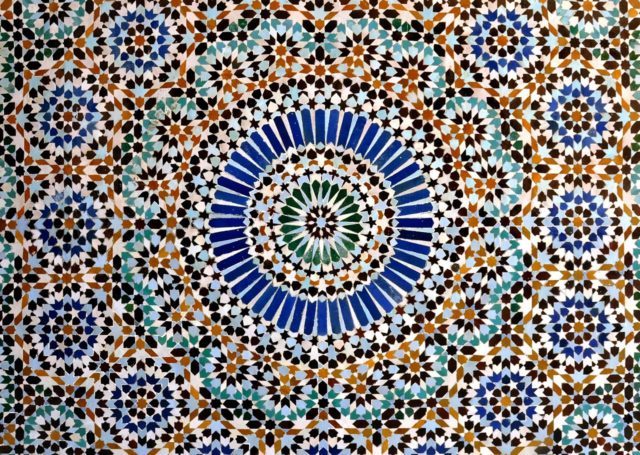
Thus, their decorative art generally features basic shapes in geometry, such as diamonds, squares, triangles, stars, crosses, or some less structural or mathematical forms that create interlacing and tessellated patterns. The other difference was in regard to the technique. Mosaics were an assemblage of pieces of polished marble, and zellige was made of earthenware tiles in colored fragments.
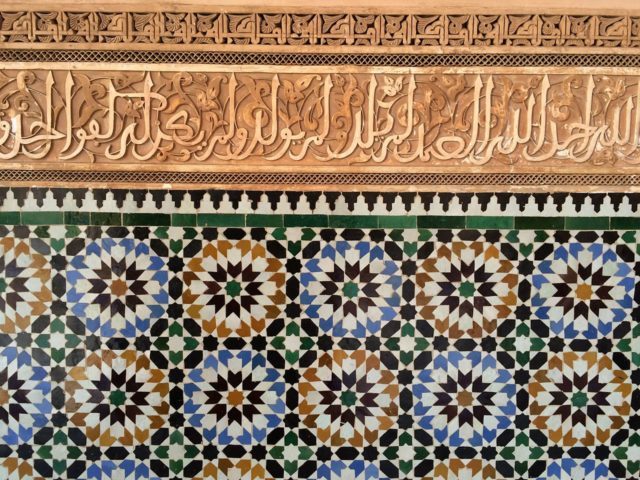
When this craft first appeared in Morocco, the tiles used were mainly of brown and white. An important event for expanding this technique was the Moorish invasion of Spain. Al-Andalus was under Moorish control, and the following dynasties were important for the further popularization of zellige: the Almoravides, Almohads, and the Berber nomadic Marinids. In the 14th century, the highest level of perfection and sophistication in decoration flourished. At that time zellige were used for almost all available type of architecture, from palaces, fountains, and baths to patios and tombs.
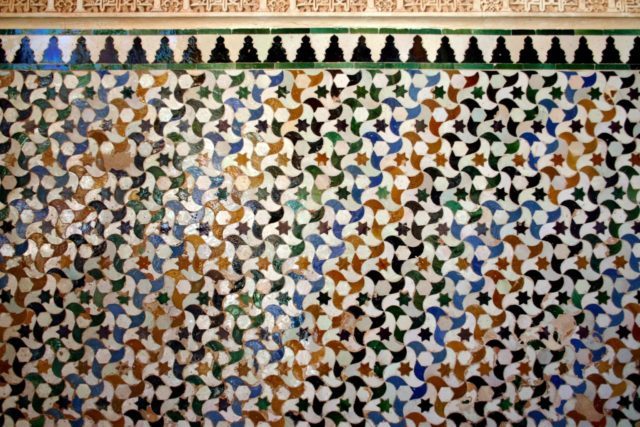
The process of making zellige is complicated and requires a large working force that has to be experienced, patient, and precise in order to follow the foundation of rules that is transmitted through the generations. The masters of the craft undergo a lengthy training process that begins in childhood. They must master exceptional skills requiring expert knowledge of mathematics and geometry. In the beginning, clay is adjusted to the correct shape by pre-drying in square or rectangular forms and afterward dried to finish.
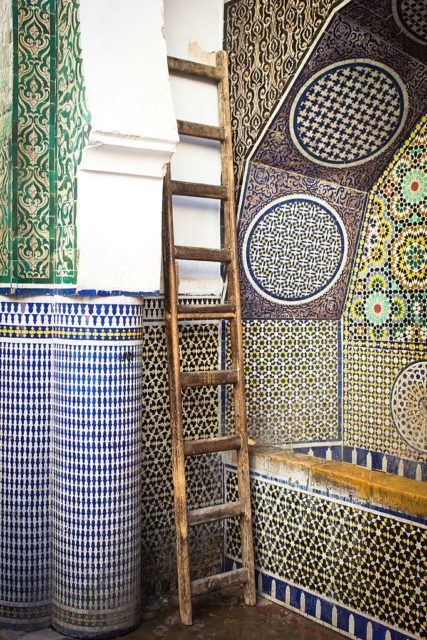
Those shapes are then glazed on one side, and on the other side, the geometric shapes cut from it are drawn with a brush. The next step involves a manual cutting of the shapes with a sharp hammer and chipping the extra parts away, and the edges then are precisely beveled into specific shapes, which requires an extremely steady hand and delicate precision.
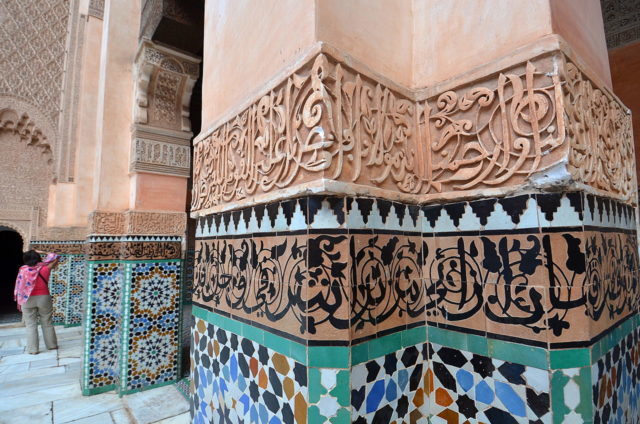
They are responsible for organizing the little pieces into a composition that is assembled upside down facing the floor, arranged in desired forms, creating the colorful patterns. It is important to make the finest joints possible, sealed in an iron rod to secure the solidity. Then, it is strengthened by cement, and the mortar is used to fix them, after which it is left to dry and form a plate. Once solid, it is ready to be put on walls.
Interestingly, the colors blue, yellow, green, and red were only added in the 17th century. Every color symbolized something different in Sufi imagery. The basic colors of black, white, and brown represented the spirit. Red stood for dry and hot fire, blue for the dry and cold earth, yellow for hot and moist air, and green for cold and moist water.
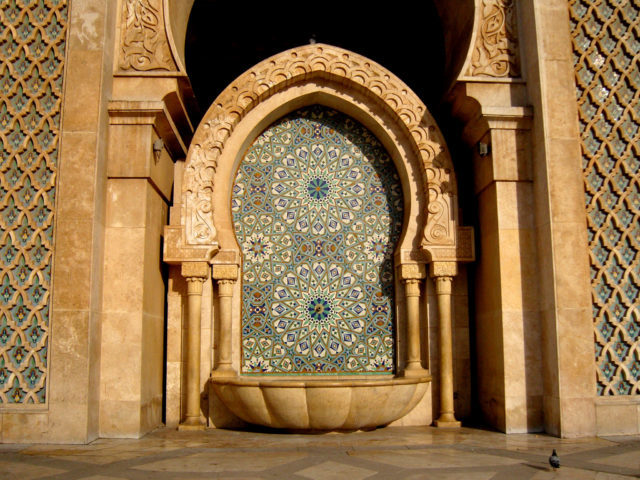
Some of the most famous examples of exquisite zellige tile work are those found in the Alhambra palace from the 14th century; Madrasa Al-Attarine from the 14th century; Nejjarine fountain in Fes; Moulay Ismail’s tomb in Meknes; Madrasa Ben Youssef; and Dar si Said in Marrakesh; and Mohamed V Mausoleum in Rabat. Zelliges were used as a symbol of power and royalty throughout history, and they are still used for building edifices of high importance, as well as having huge cultural and religious significance.
One example is the Hassan II Mosque, which was finished in 1993 in Casablanca. It is the largest mosque in Morocco and a showcase of typical traditional art. Today, this technique is popular all over the world and has gained attention in contemporary architecture. The aesthetic has become fashionable among Western interior designs. Even wallpapers are made to imitate zellige patterns.
